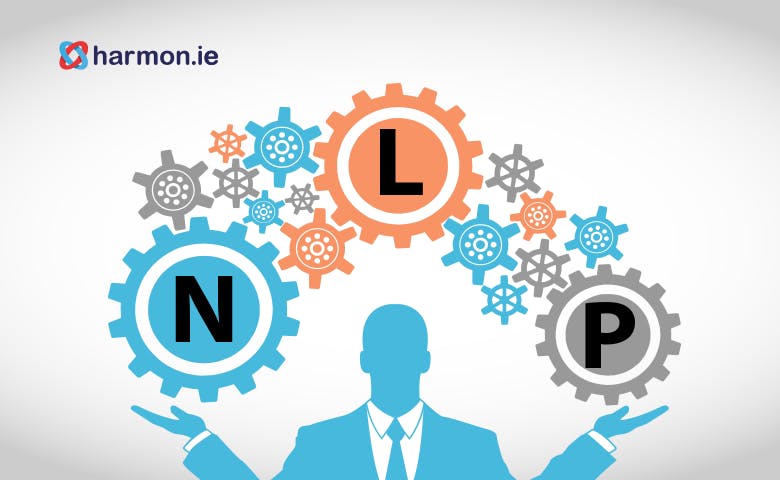Natural language processing (NLP) has long played a fundamental role in several key functions we perform every day – from autofill in search to spellchecker in word processors. This has jumped up a level in sophistication in recent years with the emergence of chatbots and intelligent personal assistants like Amazon’s Alexa, Microsoft’s Cortana and Google Assistant. With one in six adults in the US reportedly owning a voice-activated intelligent speaker, NLP-powered technology has become an everyday tool for many.
But what’s next for NLP, and how is it being applied in the modern workplace? The fundamental goal of AI should be to help people do their jobs better, not to replace them. In this blog, we examine recent progress in natural language processing and ask how it can help knowledge workers improve their productivity today.
What is natural language processing?
Natural language processing refers to computational capabilities for understanding human language. NLP enables computers to follow, respond to, and take action based on what people write and say.
Both in speech and when written, human language presents a complex series of problems for machines. Since the 1950s, computer scientists have been working to overcome the challenges this presents, and natural language processing has developed a lot since then. From its earliest form like ELIZA – a 1964 computer ‘therapist’ program which could respond convincingly to questions, albeit using predetermined answers – NLP has hugely improved how effectively computers understand human language.
Recent progress in natural language processing
In 2018, we have seen huge steps forward in three key areas: translation, voice search, and speech.
Translation
Microsoft recently announced that its machines had successfully translated Chinese to English with the same accuracy as a human – a feat which many doubted would ever be possible.
The value of automated translation in the workplace is self-evident. The cloud has made it easier than ever for businesses to expand across international borders and for global teams to work together. NLP makes it easier for teams made up of people who speak different languages to connect and understand each other. To this end, Microsoft has been adding translate functionality to much of its workplace productivity tools, so that users can translate text (including chat and video transcripts) in seconds and collaborate on documents together.
Voice search
AI-powered personal assistants have been a big success story for the giant tech companies – and this looks set to only increase as progress in NLP improves the range of functionality at their disposal. Voice search looks set to be one of the next big steps that shapes the roles that AI assistants play in our lives. And progress in natural language processing is at its heart.
According to some estimates 50% of all searches will be made via voice search in 2020. How this will exactly impact the workplace is yet to be seen. But what is clear is that advances in NLP are changing how we interact with technology. The inability to find information is one of the biggest barriers to workplace productivity – NLP’s ability to overcome this would be a huge plus for knowledge workers.
Natural conversation
Understanding the human voice is only part of NLP’s success story. There have also been major developments in AI’s ability to respond naturally and intelligently.
At Google’s developer conference I/O in 2018, Sundar Pichai unveiled Google Duplex – the capability for Google Assistant to make calls on behalf of users to carry out tasks like booking an appointment at the hair salon. It also convincingly carried out the conversation, mimicking small talk and even natural speech fillers. Microsoft followed suit soon after, announcing that its Chinese chatbot Xiaoice – which also writes poetry, has presented the weather on live TV, and has over 500 million friends – has made over one million calls using duplex technology.
These developments show how far progress in natural language processing has come in recreating human speech. Organizations are automating all sorts of processes to streamline how work is completed and freeing up staff to focus on higher value work. There is a clear business advantage of automating calls to set up meetings and other repetitive tasks.
Does this serve the modern workplace?
These developments are incredibly exciting – but it’s important not to get too far ahead of ourselves. Although these new technologies will no doubt positively impact the workplace, it is yet to be seen how. We need to ask how NLP can serve the modern workplace today and how can it help knowledge workers get more done at work.
There is one application of NLP that can make a big impact. This is the sorting of unstructured data, like text in documents and email, and bringing important information to knowledge workers when they need it.
AI isn’t here to replace jobs; it should instead aim to help people do a better job – it’s about augmented intelligence, rather than artificial intelligence. At harmon.ie we have always believed this to be a key measure of success in any progress in natural language processing. And it is a belief that has helped shape our solution, which aims to help knowledge workers achieve more at work.
harmon.ie is an AI-powered tool that uses natural language processing to aggregate and organize information for knowledge workers in the context of the work they are focused on. harmon.ie sits within Outlook – the place that knowledge workers spend most of their work-days – and cuts the time and effort users would need to get work done.

